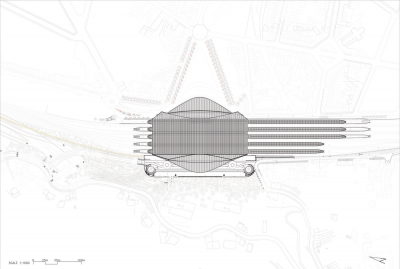Liège-Guillemins TGV Railway Station
The City of Liège is today a major node in the European high-speed rail network, with links to Great Britain, France, the Benelux countries and Germany.
Due to his experience in this field (with projects such as the Lyon-Satolas air-rail link and Oriente station in Lisbon) Santiago Calatrava won the commission to design the new Liège-Guillemins station.
Calatrava conceived the station as a link between two distinct areas of the city of Liège, which had been previously separated by the railroad tracks. North of the site is a rundown urban area, laid out in a typical 19th century style. The slopes of the Cointe Hill located on the south host a less dense, landscaped residential area. Calatrava designed a 200 meters wide passenger terminal, built symmetrically about a northwest-southeast axis that bridges these two distinct areas with the arched roof of the terminal building extending over the five platforms for a further 145 meters. The Plaza level extends below the platforms, housing commercial units (including the ticketing area bars, kiosks and a restaurant). To the rear of the station five levels are set into the southern hillside: three levels of parking, a vehicular access deck linked with the primary access footbridge, and a raised pedestrian walkway.
Transparency is achieved by means of the monumental vault (a glass and steel construction) which creates a sense of continuity between the station and the city.
The project has no facade in the traditional sense, since the interaction between interior and exterior is seamless. The monumental roof becomes, in effect, the projects facade. To an observer on the hill, the roof reveals something of the inner organization of the station. To an observer within the station the arches frame the views to the outside. From any vantage point, the sensation of transparency prevails.
Because the steel frame of the station had to be put in place without disrupting the train services, a technique normally employed in bridge construction was used. The principal frames were assembled in a staging area away from the tracks, located at the Place de la Gare. At night, the frames were jacked in groups of six onto their permanent supports. Once the principal roofs are in place, the two canopies were assembled in position and glazed.
Area of construction: 49,000 m2 (incl. tracks)
Year of completion: 2009
Dimensions:
Total length: 488 m
Total length of steel work: 410 m
Total work in steel: 160 m
Max. span between supports: 158 m
Total surface glazed roof area: 33,000 m2

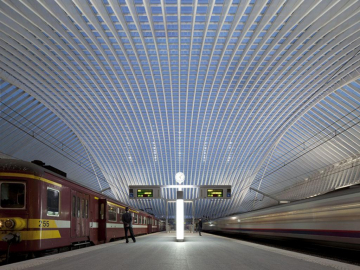
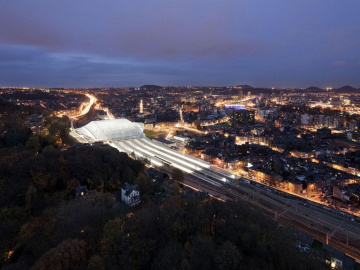
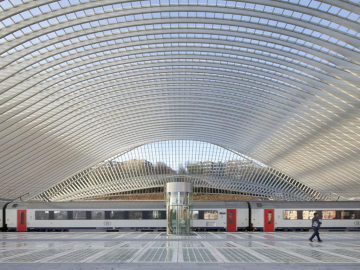
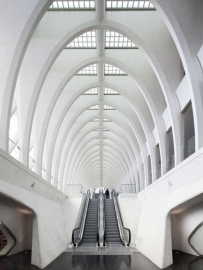
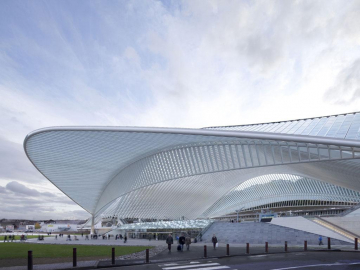
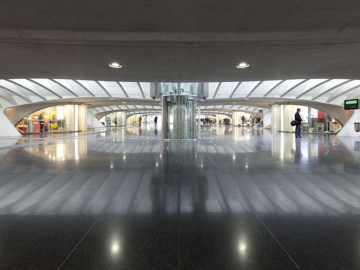
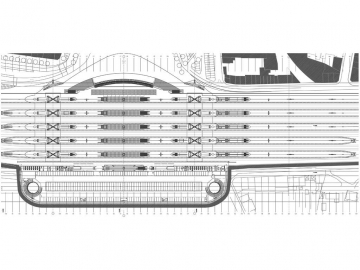
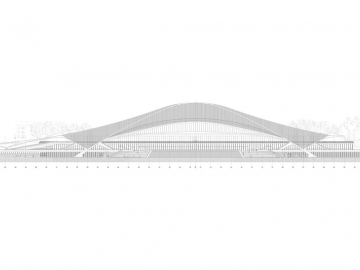
 copy.jpg)
 copy.jpg)
